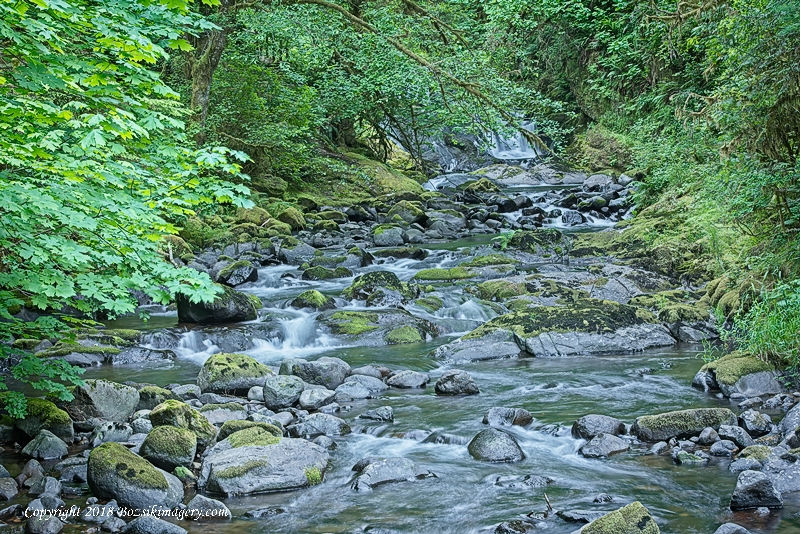Outdoor Photography Tips 42- Looking at Water - Capturing Waterfalls
- David L. Bozsik
- Jul 26, 2018
- 4 min read
I just recently returned from a trip through northern California and southern Oregon. Stopping at one of the major National Wildlife Refuges in northern California provided some splendid opportunities for capturing images of various bird species, but the other half of the trip was targeted at procuring waterfall photos for my next gallery exhibit in September.
As preparation for this trip, I visited the Internet to locate possible places that would be useful. If you have ever been to Oregon, you are quite aware that the state is known for the large number of waterfalls. After searching, I located a group of falls just outside the town of Mapleton, Or. This spot contained eleven waterfalls in the short course of approximately 3/4 of a mile. The trails were also easily navigated.
If you are someone who enjoys photographing waterfalls, I have a couple of suggestions for you. The first one, which I find the most useful, but seldom practiced by photographers, is to allocate time to observe the falls. Of course I am not necessarily advocating spending the 22 hours I spent with just this series, but if you are unwilling to take the time to sit and closely observe the various aspects of the falls, you may be missing some real opportunities as exhibited in the images displayed in this article.
In the photos below, extra time was spent exploring each waterfall, and the following results are represented in the photographs. The first photo represents a nice capture that you could have obtained with a cell phone while passing by.

Here is where slowing down to enjoy the falls pays off. I would suggest that you spend time to change your perspective on the falls. I did so by walking around at the base and above the falls as well. Often, you will find it is the smaller portions of the waterfall that have some real character that will have your particular shot "standing out" from the rest of your images you captured upon your initial approach to the falls.(see below) There are two shots from the same location, but at different shutter speeds. Compare the two images. Also notice this is just a portion of the larger landscape from above.


This capture (see below), I spotted while navigating the shoreline to vantage points not often viewed by others. Being close to the moss and fallen leaves brings a more detailed and interesting view into play. Smaller "micro falls" I like to call them, are often as attractive as the larger picture.



My second suggestion is to be alert for possible wildlife images. By slowing down, you ensure your photo trip can not only be more relaxing by not moving all the time, but it will often provide you with a rare glimpse of wildlife that may be using the same location. Wildlife that may be present and active, but has kept itself hidden when you first appeared on the scene. Many species of plants and animals rely on this specific habitat. Most of them are difficult to spot, but with the added time in your favor, you will procure some interesting images.
A great example of this is the bird photo below. The capture is of a Dipper, or Water Ouzel. This active river explorer spends a great deal of time collecting aquatic invertebrates from the surfaces of submerged rocks. They are quite comical to watch as they walk in and out of the waterfalls and swift waters. They also nest behind waterfalls. If you are willing to wait, you may spot it as it dives behind the curtain of water to feed its young.


When I was visiting this set of waterfalls, I witnessed many people exploring the creek trails, but few, if any, located the breeding newts I discovered while inspecting the creek more closely. So if you are one who really enjoys wildlife as much as the landscape, and you decide to peruse each waterfall more closely, you won't be missing the amphibians and reptiles I was able to see along the way.
Waterfalls present themselves in so many ways. They can be cascades of hundreds of feet, or a two foot drop hidden amongst the thick brush of a local creek or stream. But regardless of their size, each one will offer something of interest if you take the time to look and absorb what you are seeing. While the emensity and grandeur of the famous falls in Yosemite National Park and other well known locations provide excellent photo opportunities, those local streams and creeks should never be overlooked.

The next time you find yourself passing by moving water such as a waterfall or cascade, stop to observe the many small activities and components that make up the beauty of the scene. Your images will be more interesting to others and you will be providing yourself with some possible wildlife action as well.
Now get out there and find a waterfall, and as always, happy shooting.































Comments